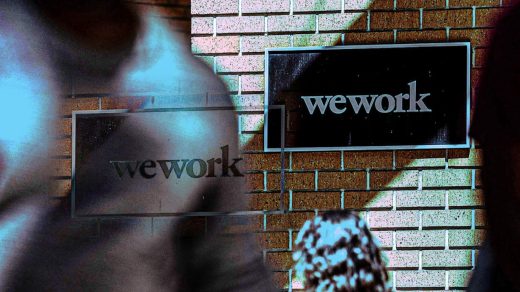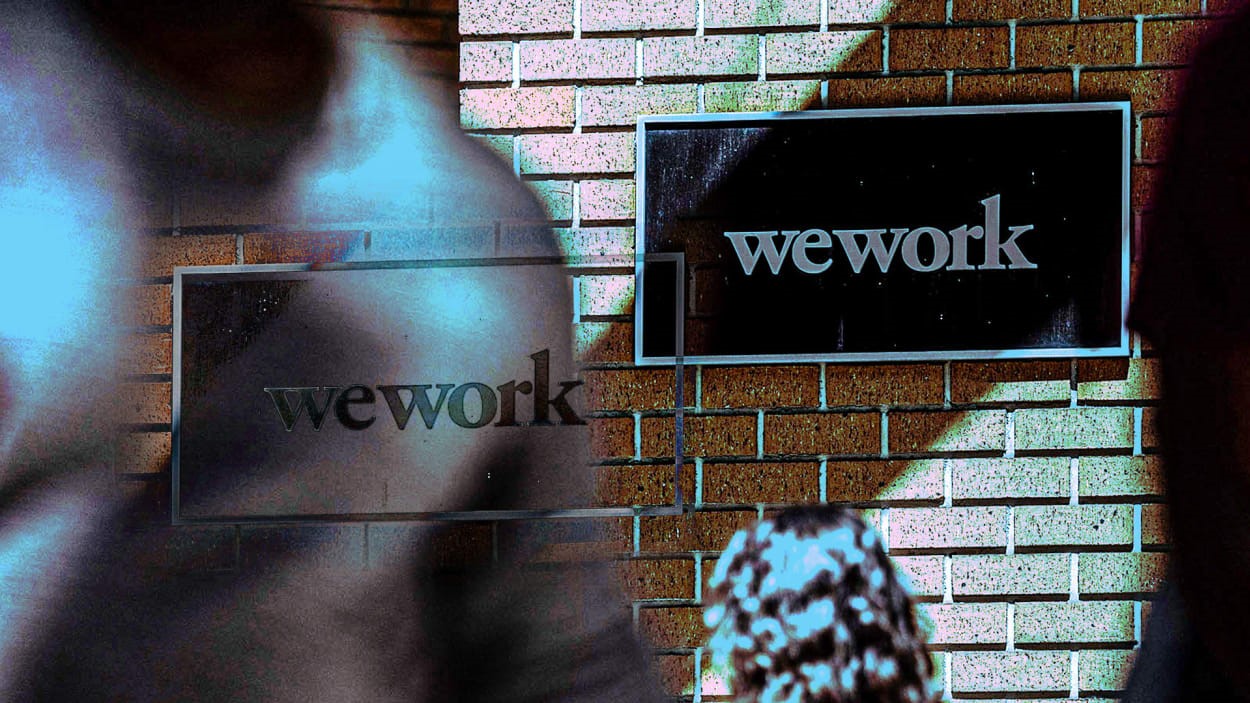WeWork stock: WE’s reverse split on the NYSE will bring its share price up—but investors won’t be happy
Over the past several years, many notable stocks have undergone splits—including Amazon, Tesla, and Apple. These stock splits increase the number of shares available while at the same time reducing their value by a commensurate rate. The goal was to lower the price of an individual share so the stock becomes more attractive to retail investors.
But on Friday, the beleaguered coworking space company WeWork announced it would do just the opposite. Instead of splitting its stock, it will initiate a reverse stock split. Here’s what you need to know.
What is a reverse stock split? When a company initiates a reverse stock split, it effectively reduces the number of shares available by combining multiple shares into one. These new shares then take on a higher value than the older, more abundant shares. An example: Say the imaginary company XYZ Corp. is made up of 1,000 shares worth $2 each. They decide to do a reverse stock split of 1-for-10, meaning that for every 10 previous shares there will now be only 1 share after the reverse stock split. After the 1-for-10 reverse split, XYZ Corp. will only be made up of 100 shares, but each share will be worth $20.
So do investors make money when a stock undergoes a reverse split? No. When a stock undoes a reverse split, investors will see the value of their shares increase, but they will then own fewer shares than they did before the reverse split. So the total value of the sum of their pre- and post-reverse split shares will be the same. In the example above, you’ll see that the total value of the pre- and post-reverse split shares both equaled $2,000 (1,000 shares times $2 and 100 shares times $20 both equal $2,000).
But if a reverse stock split makes a stock look more expensive, won’t that put investors off WeWork stock? It could as many retail investors see higher share prices as psychological barriers—the price looks high so they don’t buy in, either fearing it’s too much for them or that because the price is high, the stock won’t grow as much. But WeWork isn’t doing the reverse stock split for investors.
Then why is WeWork undergoing a reverse stock split? Not for a reason that should make investors happy. Usually, reverse stock splits are a sign a company is in trouble. And the reason WeWork is doing a reverse stock split is that the stock (ticker: WE) has sunk so low, the company is about to get booted from the New York Stock Exchange (NYSE).
Why would the NYSE boot WeWork from its market? The NYSE has a rule that all companies traded on its market must have a minimum closing share price of at least $1 over a certain period. WE stock is currently trading at just $0.14 per share, and its stock has traded below the $1 threshold for more than 30 days. The company now needs to get its average closing share price up to $1 or more over the next six months, or else it will be booted from the NYSE. Hence, WeWork is undergoing the reverse stock split to quickly get above the $1 threshold.
What will the reverse stock split ratio be? When WeWork undergoes its reverse split it will be at a 1-for-40 ratio. This means there will be forty times fewer WE shares, but each share will be worth forty times as much.
When will the WeWork reverse stock split happen? The reverse stock split will take place at 4:01 p.m. ET on Friday, September 1, 2023. That’s after the close of trading for the week. WE shares will then begin trading at their new reverse split-adjusted price on Tuesday, September 5, 2023.
How much will WE shares be worth after the reverse stock split? That won’t be known until we know what the closing price of WE stock is on September 1st. But as an example only, let’s say WE stock is still trading at around its current level (14 cents per share) on September 1st. Then the 1-for-40 reverse split occurs after the bell, and when trading resumes next week each WE share would then be worth $5.60—well above the threshold that WE needs to be at to continue trading on the NYSE.
(16)



